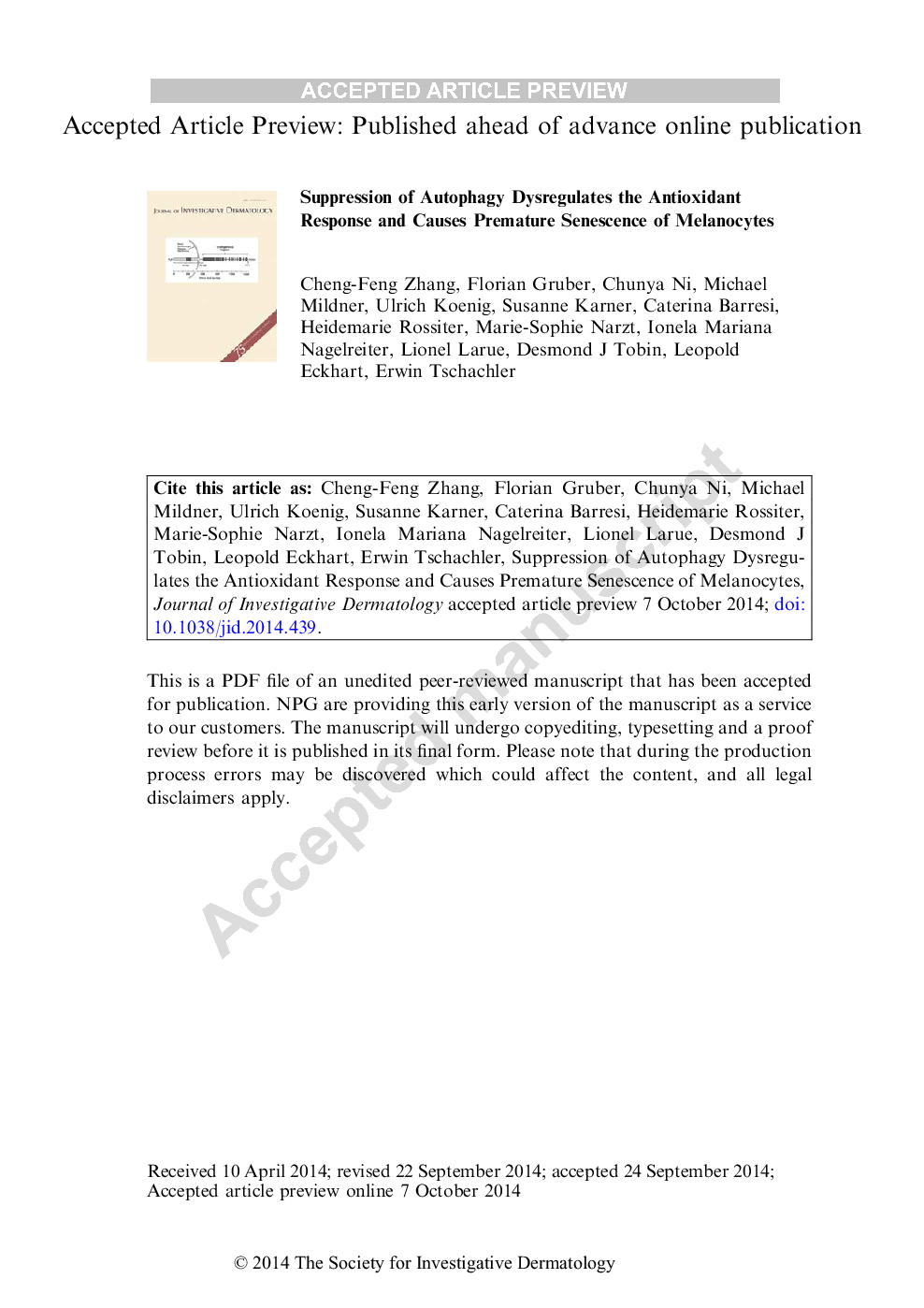| Article ID | Journal | Published Year | Pages | File Type |
|---|---|---|---|---|
| 6075187 | Journal of Investigative Dermatology | 2015 | 27 Pages |
Abstract
Autophagy is the central cellular mechanism for delivering organelles and cytoplasm to lysosomes for degradation and recycling of their molecular components. To determine the contribution of autophagy to melanocyte (MC) biology, we inactivated the essential autophagy gene Atg7 specifically in MCs using the Cre-loxP system. This gene deletion efficiently suppressed a key step in autophagy, lipidation of microtubule-associated protein 1 light chain 3 beta (LC3), in MCs and induced slight hypopigmentation of the epidermis in mice. The melanin content of hair was decreased by 10-15% in mice with autophagy-deficient MC as compared with control animals. When cultured in vitro, MCs from mutant and control mice produced equal amounts of melanin per cell. However, Atg7-deficient MCs entered into premature growth arrest and accumulated reactive oxygen species (ROS) damage, ubiquitinated proteins, and the multi-functional adapter protein SQSTM1/p62. Moreover, nuclear factor erythroid 2-related factor 2 (Nrf2)-dependent expression of NAD(P)H dehydrogenase, quinone 1, and glutathione S-transferase Mu 1 was increased, indicating a contribution of autophagy to redox homeostasis in MCs. In summary, the results of our study suggest that Atg7-dependent autophagy is dispensable for melanogenesis but necessary for achieving the full proliferative capacity of MCs.
Related Topics
Health Sciences
Medicine and Dentistry
Dermatology
Authors
Cheng-Feng Zhang, Florian Gruber, Chunya Ni, Michael Mildner, Ulrich Koenig, Susanne Karner, Caterina Barresi, Heidemarie Rossiter, Marie-Sophie Narzt, Ionela M. Nagelreiter, Lionel Larue, Desmond J. Tobin, Leopold Eckhart, Erwin Tschachler,
